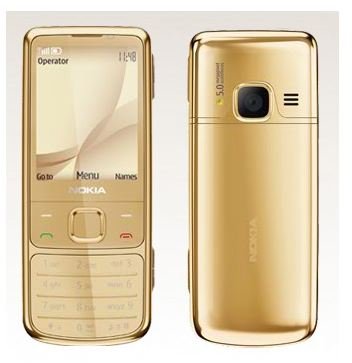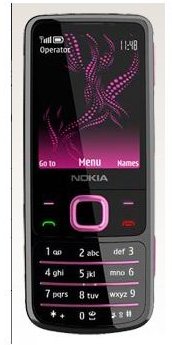Review of Nokia 6700 Classic Part 1: Introduction and Design
Introduction
The Nokia 6700 is a quintessential Nokia phone; it is intended to be a phone, and not much else, and it accomplishes that with panache. It takes the simple and classic candybar form and ups the design quotient significantly. In the end, the user has a stylish phone with basic features that work very well.
This phone is aimed at the general market, where not everyone wants to spend a large amount of money on a mobile handset. Although the trend is for more features rather than less, those features come at a cost. Some people may just like a phone which looks good and that is exactly the slot in which the Nokia 6700 fits.
Design (5 out of 5)
The first impression of the Nokia 6700 is one of understated elegance and impeccable style. It is a tiny phone measuring 109 by 45 by 11.2 mm. However its small stature is quite deceptive as the handset feels solid, weighing in at 113 gm – which is heavy for a smallish handset.
The colour scheme of the phone is black with chrome highlights. The black is steel rather than plastic, which contributes significantly to the weight. The body feels sturdy and glossy, without the constant threat of fingerprints marring its finish. The chrome highlights are a nice touch, as they run alongside the edges discreetly but with distinct flair.
There are very few buttons on any of the edges, as the form factor has been kept simple to a fault. The front has the small 2.2 inch display, with a resolution of 240 x 320 pixels, the standard directional pad, context-sensitive buttons, call manipulation buttons and the keypad. The right edge has the volume rocker switch and the camera button. The bottom edge has the charging port, the microUSB slot and the microphone. The back panel has the 5 megapixel lens, a small LED flash and the loudspeaker. The top and left edges are free of any clutter whatsoever.
It is clear that the 6700 is primarily a style statement. As a result it comes in a number of colours including, gray, black, silver, gold and white gold.
Features (4 out of 5)

The contacts manager is standard, with the ability to store up to 2000 contacts. Each contact can have a number of different fields for information, with an upper limit of five phone numbers each. Apart from the usual functions, there is an interesting feature tied in with the telephony. When there is an incoming call, the contact image is stretched to fit the screen; whereas when a call is being made, the image remains small. It makes for easy identification of the caller. There is also a new feature that ties in with Ovi Maps called Find-on-Map. The contact’s address can be located on the Ovi Maps for quick reference. This is an excellent example of integration, usually only visible in Google products.
Interestingly, the messaging application has options to record flash and audio messages, in addition to the more standard SMS and MMS ones. Apart from that, the editor has all the standard features, including the T9 dictionary, intuitive contact searches and delivery reports.
The gallery is somewhat limited, which is a flaw of the mobile operating system rather than this particular handset. The folders are displayed in a flat list format, which is not easy to navigate. The files are also similarly stored, which makes scrolling from one to the next cumbersome. The gallery is limited in terms of features as well, with just the bare minimum to get by. There are photo editing options, but they are highly simplistic and can only be conceivably used for functions like adding captions or backgrounds.
The music player is another matter altogether, with the same features as one on a more sophisticated handset. There is album art, visualizations and the ability to play a decent variety of file formats. There are equalizer presets, and also the option to store two custom presets, which is a nice option for a mid-range handset. The video player is similarly designed, except it lacks the music player’s versatility with file formats. There are the basic functions for playback, and that is about all there is to it.
The camera is of good quality with 5 megapixel capability, which is an agreeable surprise considering that the phone is decidedly mid-range. The camera application is limited of course, with a few settings for things like white balance and flash. The LED flash is really ineffectual, and it cannot be used for video recording.
The web browser is certainly better than its predecessors, but has a few strange shortcomings. It has been built using WebKit-based HTML, which is the basis of many other powerful mobile phone browsers. The application is smooth to use, with pages loading quickly, and intuitive scrolling. However, the phone has an accelerometer, and yet fails to use it with the browser. In addition, although Flash is supported, not all videos can be played without assistance from the external media player – which becomes a tedious process.
One of the better features of the Nokia 6700 is the number of pre-loaded applications on the handset. There are organization tools, utilities, games and many other goodies for free use. There is integration with Ovi, which allows the user to browse through applications and download them easily as well.
User Interface (4 out of 5)
Using the Nokia 6700 may seem fiddly with the smallish buttons and controls, however that is far from being the case. The buttons are small, without doubt, but they are quite easy to use due the spacing between each one. In addition to the generous space, the feedback from using the buttons does not leave the user wondering whether or not the keypress worked. The directional pad looks especially daunting, as the edges are thin and sit flush against the surface. In this instance as well, the space around is instrumental in using the pad effectively and without mistakes.
The operating system installed on the Nokia 6700 is unfortunately the S40 version of Symbian. While the operating system itself is not bad, it is disappointing since there are other, newer versions which could have been installed just as easily. The main disadvantage of the S40 is the lack of multi-tasking options. Java applications cannot lose focus if they are open in the memory. Therefore if a message is received, the user needs to wait until the application is shut down to access it.
The homescreen shortcuts are completely customizable, which include the context-sensitive keys and the four directions on the pad. The centre key brings up the main menu, which is in turn organized in the traditional Symbian style. This is of course only available on the normal standby screen, as the active standby option requires the directional buttons for navigation.
Performance (5 out of 5)
Although the screen size is less than ideal, the screen itself is of excellent quality. The picture quality is clear and sharp, whether in lowlight or bright light conditions. There is no loss of clarity or visibility when using the phone is broad daylight, which is a significant improvement considering Nokia’s track record in that particular area.
The speed of the phone is remarkable, with no lag whatsoever. This is perhaps a result of the lack of multi-tasking support, however it is still a definite advantage. The applications load smoothly and the phone does not freeze unexpectedly.
Call performance is excellent, with very little disturbance. The handset has strong signal reception, which makes telephony painless. There is a feature known as Voice Clarity, which presumably filters the sound to remove white noise and background sounds.
Connectivity is very good, with the ability to exploit high-speed connections of almost every kind. There is one drawback though, as there is no Wi-Fi on the Nokia 6700. It is inconceivable as to the reason it was left out, and therefore is a real disappointment in an otherwise well-equipped phone.
The Verdict (4 out of 5)
The flaws of the Nokia 6700 are fairly minor when all things are considered. The screen could have been larger certainly, however it is unclear whether it would have been possible without increasing the dimensions. If that was the case, the phone would lose its slim appeal. In addition, there is no dedicated headphone jack, as the headset plugs into the microUSB port. While multi-purpose ports are understandable, this is one omission which is rather unnecessary.
Apart from these minor hiccups, the Nokia 6700 is a great device. It is perhaps best suited to a user for whom telephony is of primary importance. The other features may or may not be used, but the phone presents a stylish appearance. It is certainly value for money.
